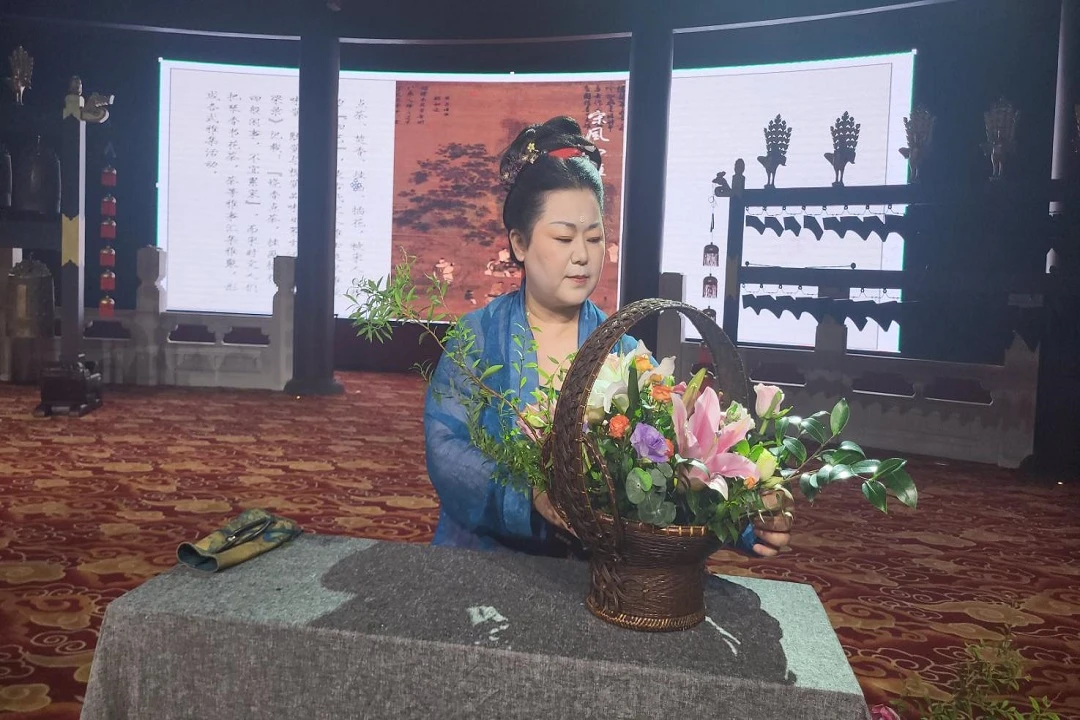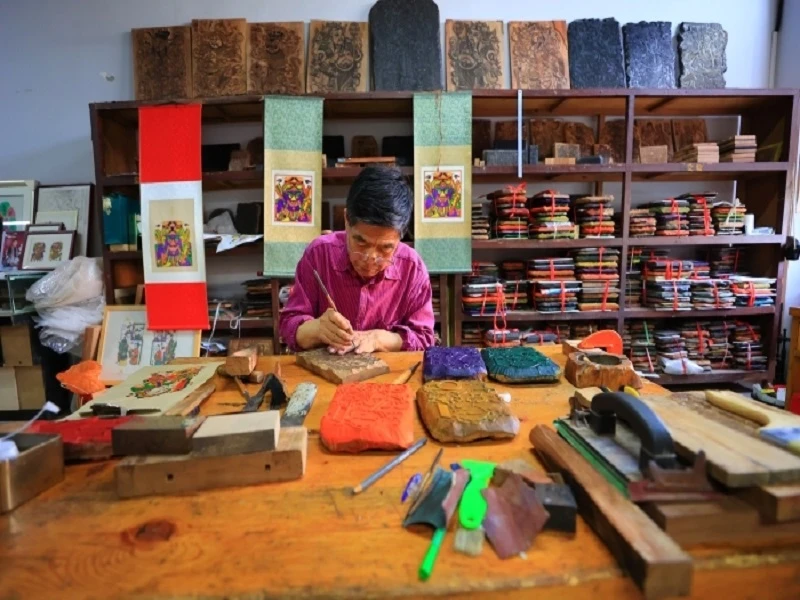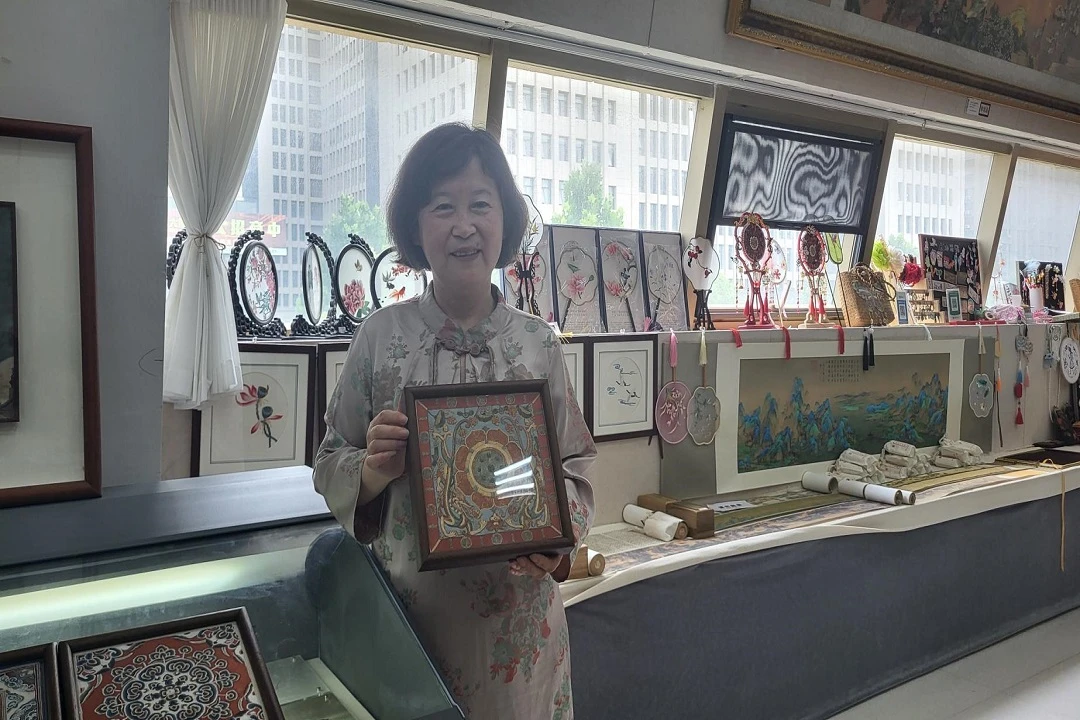In recent years, traditional Chinese culture has been infused with new vitality through the rise of "New Chinese Style" (新中式), captivating the younger generation with its unique blend of ancient charm and contemporary flair. Cultural and creative products, intangible heritage skills, and experiences rooted in traditional Chinese aesthetics have captured the hearts of the younger generation, becoming the new sensation in contemporary culture.
This cultural renaissance is not just about aesthetics; it's an immersive journey into the past, as exemplified by the "Song Dynasty Elegance" (宋风四雅) experience in Kaifeng.
Encountering Ancient Aesthetics in "Song Dynasty's Four Elegances"
The serene city of Kaifeng hosts a mesmerizing exhibition at its museum, where visitors are transported back a thousand years to the Song Dynasty. This immersive experience, dubbed "Song Dynasty's Four Elegances", showcases the ancient arts of incense burning (焚香), tea brewing (点茶), flower arranging (插花), and painting appreciation (挂画).
Deng Fenyue, a master of traditional incense making and the curator of the "Song Dynasty's Four Elegances" project, explains, "The 'Four Elegances' encompass incense, tea, flowers, and paintings. Today, they extend to music, calligraphy, and dance, blending aesthetic and artistic values passed down through millennia."
These traditional practices elevate daily life into an art form, reflecting the Song literati's pursuit of elegance and harmony with nature. "By engaging in these practices, one can find peace amidst the chaos of modern life, echoing the Song scholars' pursuit of harmony between man and nature." This philosophy is not just about aesthetic pleasure but also a means to cultivate inner tranquility and appreciation for the natural world. Deng emphasizes that the best way to preserve these traditions is by integrating them into everyday life. "Through immersive performances, we connect modern audiences with the ancient Song lifestyle, encouraging them to incorporate these practices into their lives."
The rise in popularity of TV dramas depicting Song Dynasty life has drawn more young people to these cultural treasures. This year, Deng aims to introduce "Song Dynasty's Four Elegances" internationally, sharing the refined lifestyle and artistic pursuits of the Song literati with a global audience.
Hebei University associate professor Jin Qiang, after visiting the immersive exhibition, remarked, "The combination of incense, tea, flowers, and paintings offers a multifaceted sensory experience, showcasing the Song literati's sophisticated lifestyle. It's a delightful surprise to see ancient traditions so well-preserved in modern Kaifeng."
Weaving Happiness with Every Stitch: The Art of Bian Embroidery (汴绣)
Bian embroidery, renowned for its intricate craftsmanship and vibrant colors, dates back to the Song Dynasty and is recognized as a national intangible cultural heritage. Miao Wei, a native of Kaifeng, began learning embroidery at the age of seven. Today, she leads efforts to preserve and innovate this traditional art form.
"We've launched initiatives to teach embroidery techniques in impoverished villages, integrating painting skills to enhance the art's aesthetic value," Miao explains. "Through these efforts, we aim to infuse Bian embroidery with fresh artistic vitality." Like Miao, many artisans in Kaifeng dedicate their lives to this meticulous craft, stitching landscapes and cultural narratives that contribute to the rich tapestry of Chinese traditional culture.
The Renaissance of Ancient Guan Porcelain (官窑瓷)
In the ancient city of Kaifeng, master craftsman Chen Lianyi has spent over two decades reviving the art of Guan porcelain, a revered craft from the Northern Song Dynasty. Known as one of China's five famous porcelains, Guan ware represents the pinnacle of Chinese celadon artistry.
Chen's journey began after graduating from Henan University's Department of Arts and Crafts. He immersed himself in the study of Guan porcelain, consulting experts and examining historical kiln sites. His dedication led to the development of a unique method using local Yellow River mud, reducing production costs by 50%.
"True art requires both skill and cultural depth," Chen asserts. "A great piece of Guan porcelain must possess both exquisite form and profound cultural significance to resonate with people and be passed down through generations." Over two decades, Chen has meticulously researched and recreated the exquisite porcelain that once graced the courts of the Song Dynasty.
His work embodies the spirit of innovation and respect for tradition. "Without understanding the historical and cultural context, a piece lacks soul." Chen's porcelain pieces, characterized by their elegant forms and rich glazes, are a testament to his mastery and dedication. His efforts have not only revived a lost art but also contributed to the cultural and economic development of Kaifeng.
Woodblock New Year Prints: Carving Memories
Another gem of Kaifeng's cultural heritage is the Zhu Xian Town woodblock New Year prints (朱仙镇木版年画). Known as the "living fossil" of Chinese folk art, these prints are celebrated for their bold lines, vivid colors, and lively depictions of deities and folklore. The intricate process involves sketching, carving, and printing, with each step requiring exceptional skill and patience.
Craftsmen spend years perfecting their technique, ensuring that each stroke is precise and each print captures the essence of the tradition. These prints not only serve as festive decorations but also as tangible connections to the past, evoking memories of celebrations and rituals passed down through generations.
Embracing Tradition in Modern Times
These vivid examples of cultural heritage — from the refined lifestyle of the Song Dynasty to the intricate artistry of Bian embroidery and the timeless beauty of Guan porcelain and woodblock paintings — illustrate how ancient traditions continue to thrive and evolve. By integrating these practices into modern life and promoting them globally, the new wave of Chinese cultural renaissance ensures that these treasured traditions remain vibrant and relevant for future generations.



